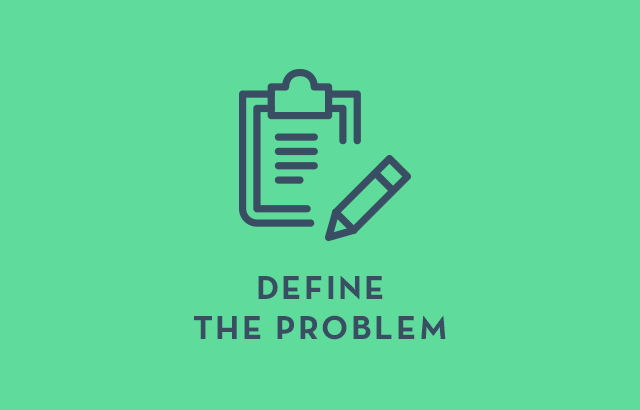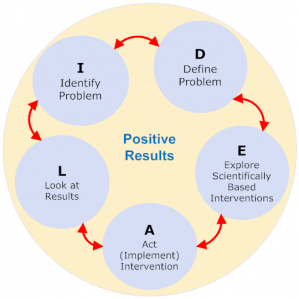 Each of us solves problems daily, both at work and in our personal lives. Problems range from the simple - 'what can I cook tonight with the ingredients in my cupboard?' to the more complex 'how can I decrease our marketing spending without reducing effectiveness?'
Each of us solves problems daily, both at work and in our personal lives. Problems range from the simple - 'what can I cook tonight with the ingredients in my cupboard?' to the more complex 'how can I decrease our marketing spending without reducing effectiveness?'
If you are in a management role then your job may seem like it is constant problem solving - you are expected to lead your team in finding solutions for the day-to-day strategic problems that they face.
Most of these problems would be easy to solve if you had unlimited time and money - but you don't. Instead, each problem can have a variety of different solutions, with some taking more time and money and other resources and some taking less.
As the resources of any company are finite the question then becomes 'how can I solve this problem effectively using as few resources as possible?"
By improving your problem-solving skills you'll be able to find better answers, quicker. As your creative and analytical skills improve you'll not only become better at evaluating problems and making decisions but you'll also see improvements in other areas of your work and life.
Many people have problems with problem-solving, but with some hard work and practice of the skills below you can soon improve, reaping rewards both for your business and for your career.
Let's take a look at a five-step problem-solving model called IDEAL - Identify, Define, Examine, Act, Look - that can help you improve:
I - Identify the problem
What is the problem your team is facing today? Perhaps you need to improve your marketing, increase the productivity of a particular section of your business or come up with a new product?
Often when identifying a problem we are being reactive - reacting to a situation that has shown us this problem. Ideally, in time you will focus more on proactive problem solving - solving problems before they cause a serious issue.
D - Define the problem
We need to define the problem until we have something that is easy to fix, measurable and manageable. If you haven't properly defined a problem it can be very hard to tell if the steps you have taken have been effective.
You might in the first phase identify a problem like, "Our marketing is not effective enough." A more defined problem might be, "How can we increase the number of leads we are creating with our website without going over our budget?" Defining your problem is crucial and is a step that many people who have problems with a problem-solving skip.
To define a problem you'll need to spend time asking questions and gathering data about the specifics involved - you need to dig down into the underlying reasons for that problem in the first place.
 If you do not define the problem then you might not spend your time looking in the right area; for example with our previous example of an ineffective marketing campaign, without looking at the statistics and seeing that your website is being ineffective you might spend time and money making changes to another area of your marketing which is already doing perfectly fine.
If you do not define the problem then you might not spend your time looking in the right area; for example with our previous example of an ineffective marketing campaign, without looking at the statistics and seeing that your website is being ineffective you might spend time and money making changes to another area of your marketing which is already doing perfectly fine.
E - Examine your options
At this stage, you want to start brainstorming about how you can solve your problem. There are two key steps here. 1.) Define the limitations of your possible solution and 2.) Create an atmosphere that allows people to contribute possible solutions without having to worry about criticism.
Every business has a limited supply of workers, time, money, and other resources. You need to define what resources you have available to help you solve this problem.
Otherwise, you can spend hours of your and your team's time working on a solution only to find that you don't have the budget available to complete the solution or that you'll miss your deadline because you didn't think about how much time you have. Define your boundaries first and then start examining your options.
One of the most important things to know about problem-solving is that it is a team exercise; the more people you have creating ideas the better the chances you have of finding a great solution.
One of the biggest problems with problem-solving that many managers have is the belief that they must come up with the solution alone, and that it is a failure if someone else finds it. This is completely untrue - get as many people involved in finding solutions as you can.
A - Act on a plan
If you've clearly defined your problem and the budget, time, and resource constraints in which you need to make a decision, then brainstormed as many potential solutions as possible, then there is probably one solution that stands out.
If one of your problems is that you don't know how to choose and act on a plan out of multiple options then you need to spend more time defining the problem and getting information to help you make your decision.
It is true though that sometimes a manager will be presented with several options and it is hard to tell which one will be most effective.
 In this scenario, it is the manager's role to make a choice based on the information available and then to follow through with the energy and enthusiasm that he would have had if he was certain that was the right option.
In this scenario, it is the manager's role to make a choice based on the information available and then to follow through with the energy and enthusiasm that he would have had if he was certain that was the right option.
Once you have chosen a solution you must encourage your team to embrace it and put energy into implementing that solution - the right solution can still fail if there is a lack of enthusiasm and effort behind it. Businesses that fail to act will fail to improve.
L - Look at the consequences
Whatever solution you chose, you need to monitor any outcomes to see how they did. This is a key stage that many businessmen who have problems with problem-solving tend to skip. By understanding both your successes and failures you can improve your ability to problem-solve and the outcomes that you get in the future.
For example, a solution you came up with for the previously mentioned marketing problem didn't go as well as hoped. Why was this? Was the problem correctly defined - did you have all the information you needed? Or did you fail to examine all your options? Try to trace the root of any failures to a specific step and then improve that step next time.
Once you have completed this cycle of problem-solving you can look at the next problem. If nothing is jumping out at you as an emergency you can now be proactive instead of solving problems reactively.
Look for an area of your business or responsibility that isn't an emergency yet needs improving and start defining and working on that problem.
Highly successful businesses have a culture of problem-solving where they are constantly seeking to improve and fine-tune their products and systems, encourage this culture in your business and you'll see your business flourish.

.png?width=220&name=Do%20You%20Pocatello%20Podcast_%20(1).png)


